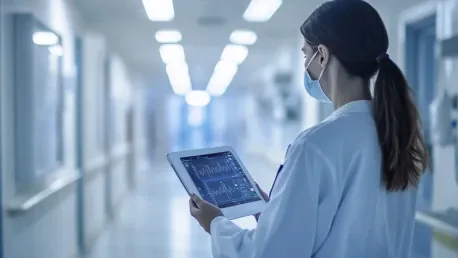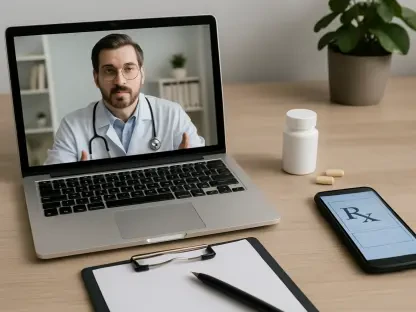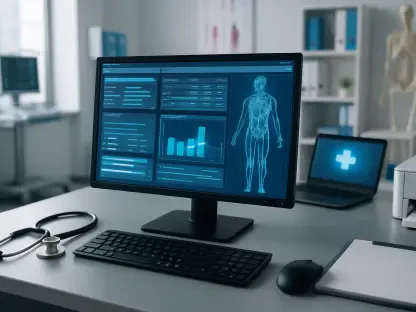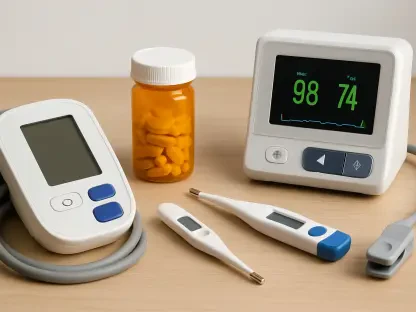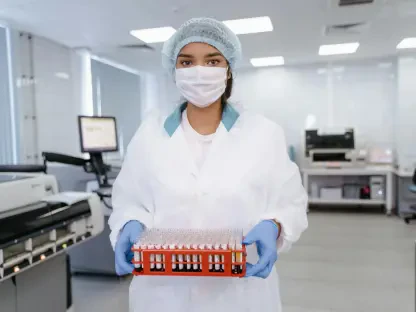Remote Patient Monitoring (RPM) technologies are making significant strides in leveraging cardiac data to address critical challenges within healthcare systems. As the diversity of healthcare options expands and patient volumes continue to rise, the focus on patient retention and capacity management becomes increasingly crucial. Julia Strandberg from Philips provides insights into how RPM technologies can play a pivotal role in overcoming these challenges.
Enhancing Patient Retention
High-Quality Patient Care Inside and Outside the Hospital
Ensuring patients receive outstanding care during hospital visits and at home is essential for patient retention. Patients today seek more than just treatment; they wish to be active participants in their healthcare journeys. This desire includes the need for timely health updates and clear guidance, ensuring that patients do not undergo unnecessary clinic visits. This engagement can enhance their adherence to prescribed treatments and foster a sense of control over their own health.
By implementing RPM technologies, healthcare providers can offer continuous monitoring and real-time updates to patients. This level of engagement, particularly for those with chronic conditions such as cardiac ailments, can substantially improve patient satisfaction and outcomes. The ability to notify patients of potential issues promptly and to provide advice on managing their conditions from the comfort of their homes reduces the stress and inconvenience associated with frequent hospital visits. Furthermore, it builds trust in the healthcare system, as patients feel their health is being monitored consistently and accurately.
Overcoming Staffing and Data Fragmentation Issues
Despite these advancements, healthcare systems face significant obstacles, including staffing shortages and fragmented data within hospital settings. The growing demand for care, compounded by these shortages, often results in longer wait times and delays in treatment. Such situations can lead to patient dissatisfaction and potentially worsen health outcomes. Fragmented hospital data systems also hinder clinicians from having a comprehensive view of a patient’s health record, leading to possible misdiagnoses or redundant tests.
Addressing these challenges involves improving interoperability among hospital systems. By integrating various data sources into a unified system, healthcare providers can ensure that clinicians have access to complete and accurate patient information. This can facilitate quicker and more precise diagnoses, reducing the need for unnecessary tests and specialty visits. With better-aligned systems, the efficiency of patient care increases, positively impacting both patient experiences and clinical outcomes. Moreover, by enabling clinicians to spend more time on direct patient care rather than data aggregation, these improvements can also help mitigate the impact of staffing shortages.
Addressing Capacity Management
Challenges of High Patient Volumes and Staffing Shortages
Healthcare systems nationwide are increasingly overwhelmed by high patient volumes and severe staffing shortages. This scenario is exacerbated by an aging population and more acute patient conditions. These factors collectively impact both staff satisfaction and patient safety. The rising complexity and acuity of patient conditions demand more intensive care, leading to burnout and job dissatisfaction among healthcare staff.
The immense pressure on healthcare systems necessitates innovative strategies to manage patient loads effectively. High patient volumes not only strain physical resources like hospital beds but also overextend healthcare professionals, potentially compromising the quality of care. Additionally, administrative tasks, such as patient scheduling and reporting, consume a significant portion of staff time. According to healthcare leaders, almost 38% report that their staff spends a considerable portion of their time managing patient data. This diversion from direct patient care can detract from the overall efficiency of the healthcare system.
Streamlining Data and Reducing Administrative Burdens
To address these challenges, it is crucial to streamline the data flow within healthcare settings. Open and interoperable systems can transform the vast amounts of clinical data into actionable insights, significantly improving operational efficiency. By reducing the administrative burdens on healthcare staff, these systems can allow healthcare professionals to focus more on patient care.
Implementing RPM technologies plays a critical role in this context. The continuous monitoring and data collection capabilities of RPM tools provide real-time insights into patient health, enabling timely interventions and reducing the need for unnecessary hospital visits. For instance, mobile cardiac telemetry devices can monitor patients’ cardiac rhythms remotely, ensuring that any anomalies are identified and addressed immediately. This can prevent the exacerbation of conditions that would otherwise require hospitalization. Furthermore, interoperable systems that integrate data from various sources can ensure that healthcare providers have comprehensive information at their fingertips, minimizing the time spent on administrative tasks and maximizing the focus on patient care.
Leveraging Cardiac Data via RPM Technologies
Real-Time Monitoring and Diagnostic Acceleration
RPM technologies, particularly mobile cardiac telemetry devices, offer significant advantages in real-time monitoring and diagnostic acceleration. A typical scenario involves a patient experiencing syncope, traditionally resulting in hospital admission for observation. However, with RPM technology, the patient can be monitored remotely while safely recuperating at home. These devices continuously track cardiac rhythms and transmit data to healthcare providers in real-time.
This approach has several benefits. Firstly, it prevents unnecessary hospital admissions, relieving pressure on hospital resources and allowing healthcare staff to focus on more acute cases. Secondly, patients benefit from staying in their familiar home environments, which can positively impact their recovery. Real-time data sharing with care teams, including cardiologists, accelerates the diagnostic and treatment process. Quick interventions based on RPM data can prevent conditions from worsening, leading to better patient outcomes and reduced healthcare costs.
Relieving Hospital Overcrowding
Utilizing RPM technologies effectively addresses the issue of hospital overcrowding. By enabling continuous monitoring of patients at home, healthcare systems can avoid admitting patients for conditions that can be managed remotely. This not only conserves hospital resources but also improves patient experiences by minimizing hospital stays. The efficiency of healthcare staff is enhanced as they can prioritize more urgent cases, ensuring that those in critical need receive timely attention.
Moreover, the integration of RPM data into broader clinical workflows supports better resource allocation and care coordination. For example, real-time cardiac data can inform treatment decisions, such as adjusting medication dosages or recommending lifestyle changes. These insights lead to personalized care plans that can be managed remotely, reducing the need for frequent in-person visits. The systemic adoption of RPM technologies can thus transform how healthcare systems manage capacity, improving patient retention and operational efficiency while maintaining high standards of care.
Adoption and Industry-Wide Shift to RPM
Embracing Home-Based Care Technology
For widespread adoption of RPM technologies, the healthcare industry must embrace the evolution of care delivery models beyond hospital walls. Recognizing the potential of home-based care technology is essential in this transformation. The benefits of such an approach are well-documented, including improved patient outcomes, shorter hospital stays, and alleviation of strain on healthcare facilities.
The transition towards home-based care offers a sustainable solution to many of the challenges faced by modern healthcare systems. By leveraging technologies that enable continuous monitoring and real-time communication, healthcare providers can deliver high-quality care remotely. This model not only supports better management of chronic conditions but also facilitates early detection of potential health issues, preventing complications that could lead to hospital admissions. As patients become more familiar and comfortable with these technologies, their acceptance and adherence to home-based care are likely to increase, further driving the shift toward remote patient monitoring.
Collaboration with Technology Vendors
Collaborating with technology vendors is crucial in facilitating the successful adoption of RPM technologies. Vendors such as Philips play a pivotal role in developing interoperable systems that integrate seamlessly with existing healthcare infrastructures. By focusing on interoperability, these partnerships ensure that clinicians have access to real-time patient data, enhancing clinical decision-making and care delivery.
The collaboration also paves the way for the incorporation of artificial intelligence (AI) into healthcare. AI can analyze vast amounts of data generated by RPM devices, providing additional insights and predictive analytics to support timely and informed decision-making. This not only streamlines clinical workflows but also identifies patterns and trends that might not be immediately apparent to human clinicians. The use of AI in conjunction with RPM technologies can revolutionize the management of chronic conditions and acute episodes, ultimately leading to better patient outcomes and more efficient resource utilization.
Conclusion
Remote Patient Monitoring (RPM) technologies offer new advancements by efficiently leveraging cardiac data to solve pressing issues within healthcare systems. As the range of healthcare options grows and the number of patients increases, focusing on patient retention and capacity management has never been more crucial. With insights from Julia Strandberg of Philips, we understand how RPM technologies can be instrumental in tackling these challenges. RPM promises to improve patient outcomes and streamline healthcare delivery by continuously monitoring patients’ cardiac health remotely. This constant data flow enables healthcare providers to make timely, informed decisions, which can prevent complications and reduce hospital readmissions. Furthermore, RPM technologies support healthcare professionals by managing large volumes of patient data more effectively, ensuring better resource allocation and personalized care plans. As we move forward, embracing RPM can lead to more sustainable healthcare systems, improved patient experiences, and enhanced overall efficiency.
